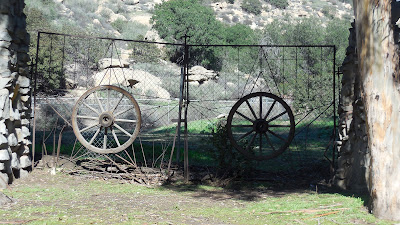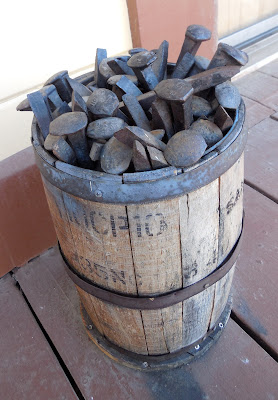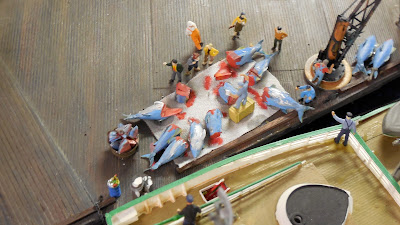Proprietors of dinettes in the late 1800's, Horn & Hardart developed a novel style of food service that had never been seen before. In 1902, the first Horn & Hardart Automat opened its doors to the hungry residents of Philadelphia, PA.
(Source)
|
Reduced to its essence, the automat was a living vending machine - a wall of louvered doors behind which sat perfectly portioned roast beef, mixed vegetables, fruit salad, or bread pudding to be had for mere nickels. On the other side of the wall was a fully-functioning kitchen and a staff of food service specialists placing and replacing food in every window. I don't know about you, but the novelty of a coin-operated food dispenser would not have been lost on Mr. Tiny; I would have been the first in line!
Can you follow directions?
(Source)
|
Patrons of an automat would make a brief stop at the cashier to exchange their folding money for coins; with a handful of nickels, an empty stomach, and a dream, the possibilities would have seemed endless!
Wrong or right, I most closely associate automats with the 1930's, because warm, hearty food bought for mere change seems like a practical option during a time when many city dwellers, reduced in means by "The Crash," would have found even a nickel a pretty dear price to pay for a meal.
 |
| By the the early 1940's, Horn & Hardart operated over 150 automats. (Source) |
Basically everything I know was learned by watching classic movies. Does that leave me with a sub-public school level, Hollywood-revisionist's understanding of history? I guess so. Does that leave me constantly shouting, "Chuck Heston" when the correct answer to the Sunday School question is "Moses?" Yea, it doth. Does that leave me breaking into musical numbers every time it rains in California? Sue me.
My favorite classic movies that feature the function and unique atmosphere of American automats are Easy Living and That Touch of Mink. Could you hope for two better heroines - Jean Arthur and Doris Day - I ask you?!!! If you've never seen one or both of these movies, do yourself a huge favor and rectify the situation.
Easy Living (1937)
with Jean Arthur and Ray Milland
That Touch of Mink (1962)
with Doris Day, Cary Grant, Audrey Meadows, and Gig Young
A fixture of America's largest cities in the first half of the 20th Century, automats began a steady decline in the 1960's, owing to post-war suburban sprawl, increased mobility of the average citizen, and the rise of America's most infamous and long-lasting culinary tradition - fast food. I guess the shenanigans shown in both films (a pessimistic, albeit realistic, portrayal of an automat's deficiencies) probably did nothing to aid in perpetuating this particular dining innovation.
In my mind, the automat should still be a viable source for feeding hungry folks of the 21st Century. It goes without saying that modern food could not be had for pocket change, but card swipers would be a practical alternative. Although as I said, my mind is addled by the unholy amount of cinema I have viewed and the facts show that my theory is baseless and totally without merit.
 |
| The end of an era (Source) |
Horn & Hardart tried unsuccessfully to revive the medium in the 1980's. As recently as 2006, a short-lived revival was underway in New York City, subsequently hammering the last nail into the automat coffin.
 |
| Bamn Automat, NYC (2006-2009) (Source) |
The inherent problem with Dutch import, Bamn Automat, was that it strayed from the original Horn & Hardart formula with menu offerings that were subpar versions of food that could be had at any number of familiar, adjacent fast food restaurants. The beauty of Bamn's forebears was that the menu consisted of hearty, homestyle cooking. Moreover, the originals had gleaming dining rooms with clean tables attended by uniformed employees. The differences are glaringly obvious, making this just another edition of "Why can't things be like they used to be?"
Fortunately, in our neck of the woods we have a Great Depression survivor/holdover in the form of Clifton's Brookdale Cafeteria (see our "Chow Time" post here). It is currently under renovation in the hands of new ownership, but we are promised a revived and restored Clifton's to be opened this year; if we can't have an automat, we'll happily survive on cafeteria fare. Where else can you get a bowl of shimmering, shimmying, confetti Jell-O?
"Automatic" - The Pointer Sisters
Because "The Neutron Dance wouldn't make any sense.
Cheers!
Mr. Tiny





















































